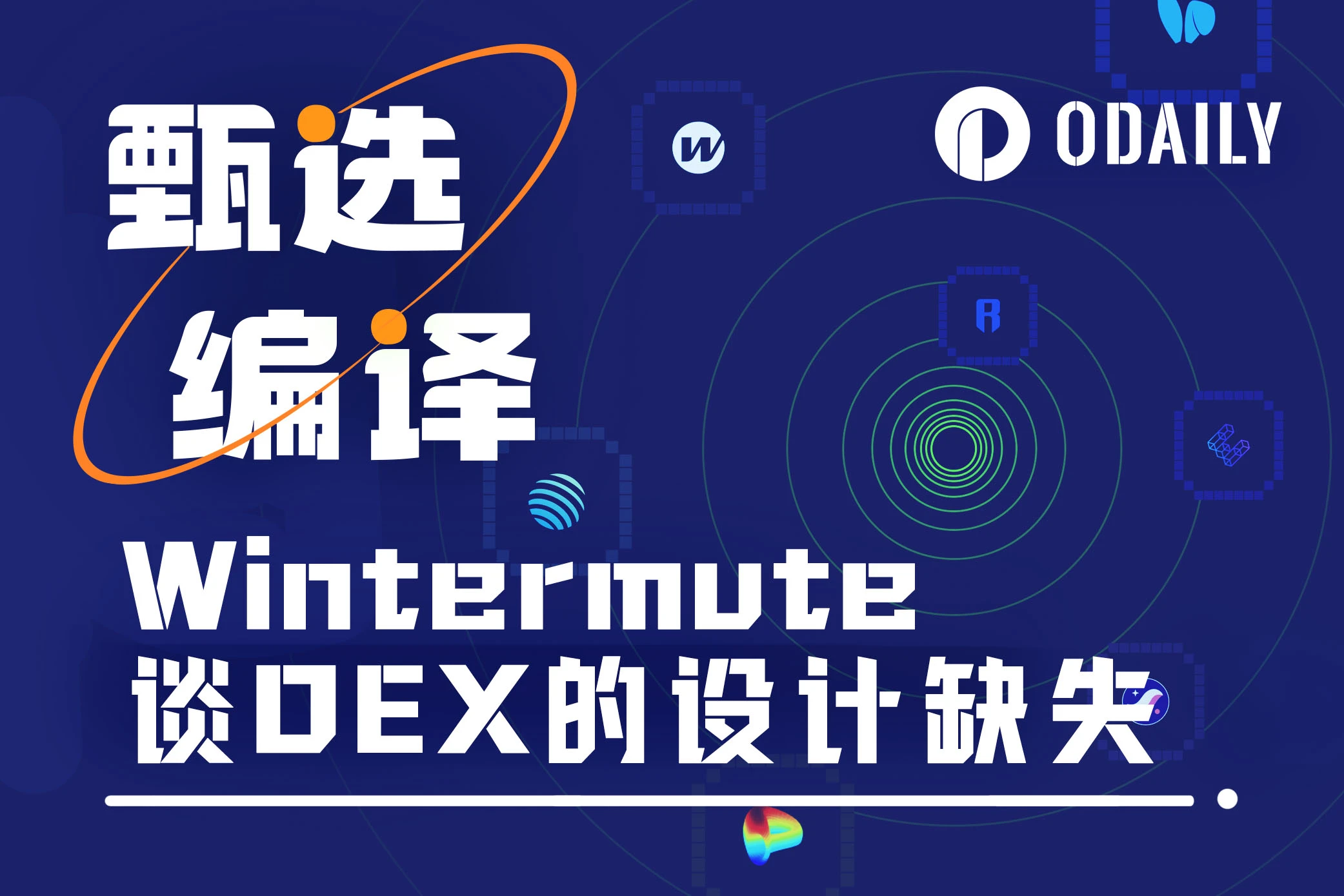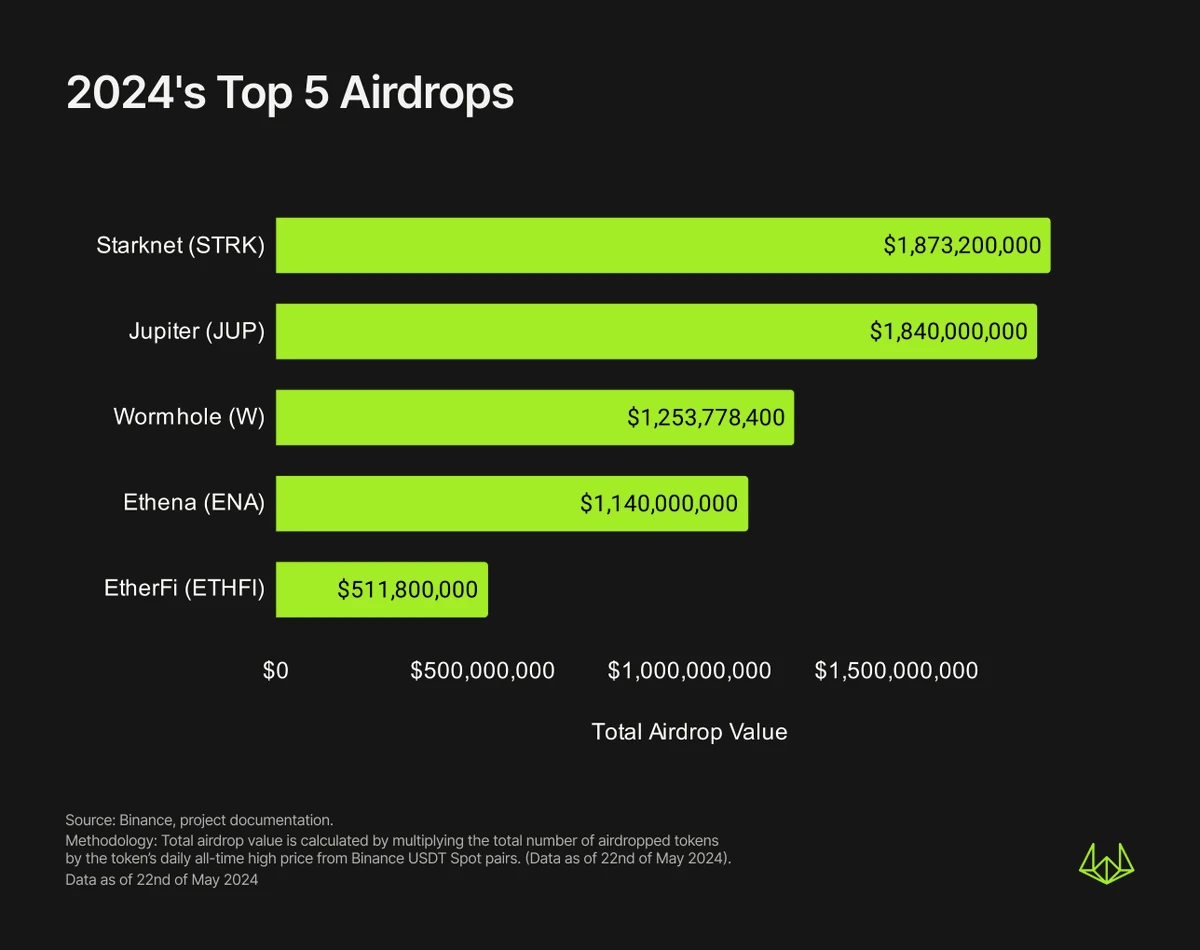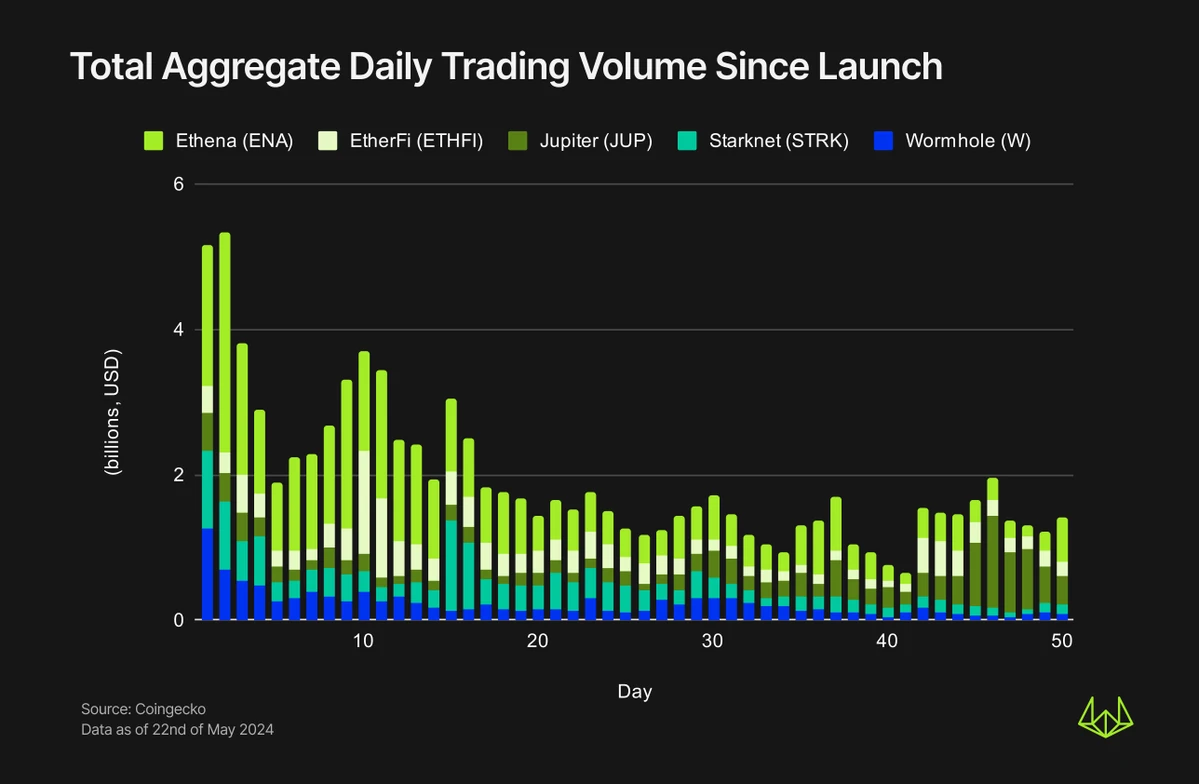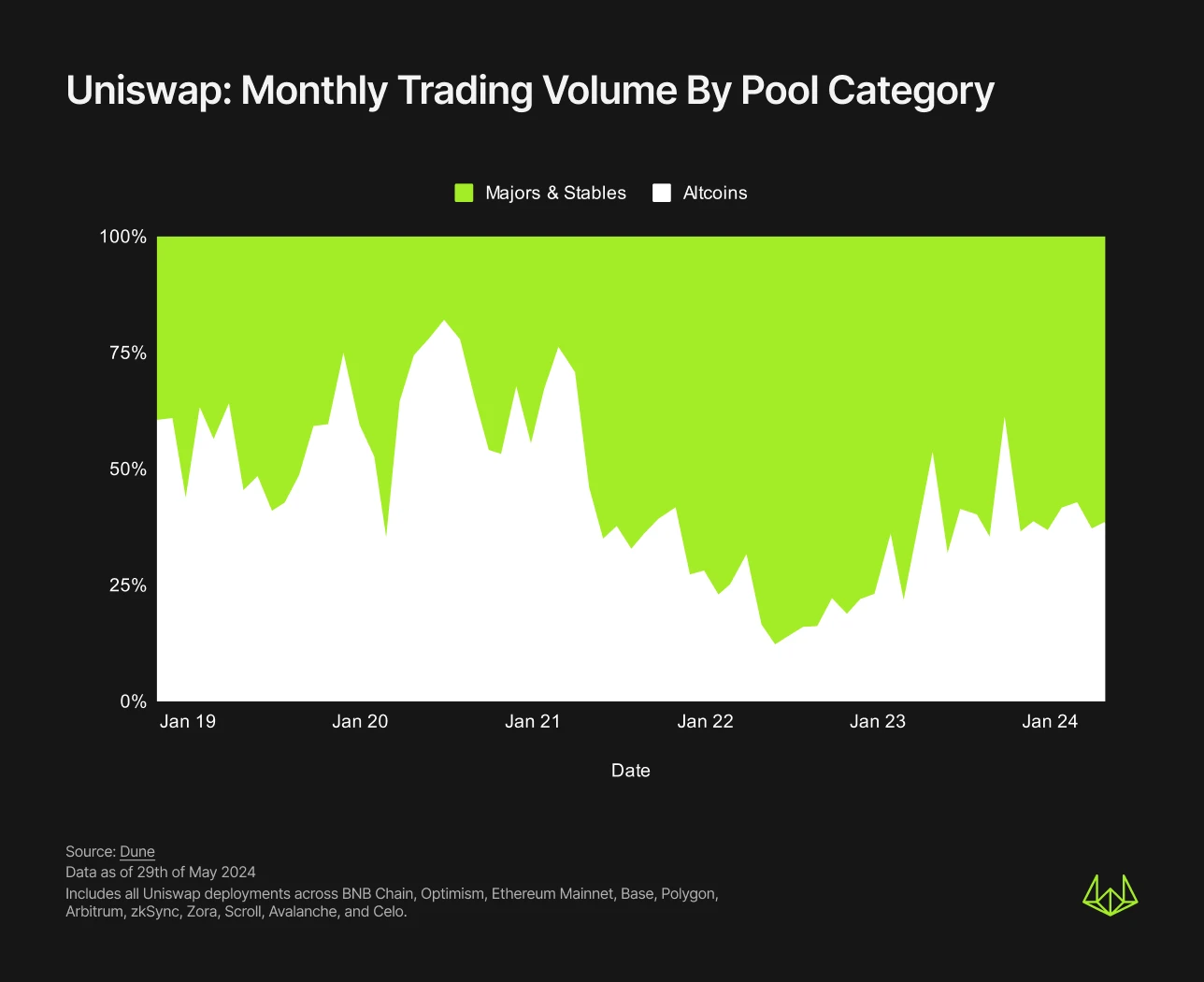Wintermute talks about the design flaws of DEX: imbalanced value distribution
This article comes from: Wintermute
Translator: Odaily Planet Daily Azuma

In the cryptocurrency world, token issuance is crucial. A successful token issuance can significantly enhance the value and influence of a protocol and bring huge wealth to various roles in the ecosystem through airdrops.
However, in the current environment, the true potential of token issuance is often limited by the design of decentralized exchanges (DEX) – the protocols that issue tokens cannot capture the value derived from trading activities. By having their own automated market maker (AMM) curves, protocols can more effectively capture and retain the value they create, thereby improving their own economic models and enhancing the sustainability of DeFi.

Token issuance can create huge value
The issuance of tokens is the most critical moment in the development of a protocol. If designed properly, it will create tremendous value for all users, contributors, investors and the entire community.
Value creation generally takes the form of airdrops, where protocols distribute tokens to users who frequently use their products. Since 2024, the five largest airdrops alone have created approximately $6.6 billion in value (excluding this week’s ZKsync and LayerZero airdrops).

The ensuing price discovery phase will continually validate and reshape airdrop recipients’ expectations of the protocol’s true valuation, and will largely determine whether they will sell their airdrop shares — and vice versa for potential buyers, determining whether they will buy in in the first place.
This gaming behavior will bring huge trading volumes on the first day of TGE, and both CEX and DEX can benefit from this process.
As shown in the figure below, the trading volume of Wormhole and Starknet on the first day of TGE exceeded US$1 billion. For a period of time after the coin issuance, the trading volume generally remained at a high level. For example, the trading volume of Ethena and Wormhole in the first 14 days accounted for more than half of the trading volume in the first 50 days.

One thing that is beyond doubt is that the success of the current token issuance will largely depend on the listing on CEX. Larger CEXs can provide better liquidity and user base, thereby helping protocol tokens gain greater exposure and achieve more efficient price discovery. Both parties can achieve mutual benefit in this process.
However, in the DEX environment, protocols often need to pay a large amount of upfront costs (for liquidity matching) to build liquidity pools on DEX, and are unable to capture the value they create through DEX.
DEX’s value hijacking
Currently, DEXs largely fail to properly price and reward the protocols that bring them volume, fees, and users.
For example, 100% of Uniswap’s transaction fees go to liquidity providers, while protocols such as Pancakeswap, Curve Finance, Balancer, etc. distribute part of the transaction fees to different groups in their ecosystems — token holders, DAO treasuries, etc. However, the protocols that create tokens and build liquidity pools receive nothing.
If you look closely at the composition of Uniswaps trading volume, various small governance/protocol tokens (altcoins relative to mainstream coins and stablecoins) have historically been one of the main sources of its trading volume, accounting for 30% to 40% of Uniswaps total trading volume in recent months. However, this number may still be underestimated because mainstream coins and stablecoins include some LST, LRT, and decentralized stablecoins, and the value of these tokens comes from the protocols that issue them.

Although Altcoins are not as profitable as mainstream coins and stablecoins in terms of trading volume, they contribute more to fees than the former. Since April 2023, Altcoins have accounted for 70%-80% of Uniswaps total monthly trading fees, with a high of 87.7% in October. The difference in Altcoin market share between trading volume and fees is mainly attributed to the 0.05% or 0.01% fee tiers commonly used by mainstream coins and stablecoins, while Altcoin pools often use 0.3% or 1% fee tiers.

As shown in the above figure, the dominance of Altcoins in transaction fees has been further strengthened since January 2023. This may be due to the continued increase in the number of Altcoins, and also because the major Altcoin protocol teams have spent countless hours and resources to maintain the community, build products, and drive the growth of token demand. However, in this process, all fees generated by token transactions are captured by DEX LPs instead of flowing to the protocol itself.
It is worth noting that some teams have attempted to recapture some value by implementing a buy/sell tax on their tokens, requiring a fee to be paid on every buy and sell. This tax model has worked quite well for some protocols like Unibot and has generated $36 million in benefits for their ecosystem and token holders. However, a general disadvantage of this approach is that it introduces greater complexity to the token contracts themselves and limits teams to capturing fees only on the tokens they deploy and control.
How to solve the problem? Build your own DEX
If leading DEXs like Uniswap hijack the value that should belong to the protocol, what should the protocol do?
One option is to launch a DEX yourself, just like Friendtech did with BunnySwap. BunnySwap was forked from Uniswap V2 by Friendtech, and its main purpose is to facilitate the trading of its native token FRIEND.
During the fork of BunnySwap, Friendtech made two important changes: first , it changed the transaction fee ratio flowing to FRIEND-WETH liquidity providers to 1.5%; second, it changed the protocol fee income belonging to the FriendTech team to 1.5%.
On the original version of Uniswap V2, you can neither achieve the first point – because the fixed rate for all liquidity pools is 0.3%; nor can you achieve the second point – the latter is also fixed at 0.05%, and all protocol fees belong to the Uniswap DAO treasury.

With these changes in place, BunnySwap has helped the FriendTech team earn $8.26 million worth of WETH from protocol fees in 35 days since the FRIEND token launch. Like most other airdrops, FRIEND has maintained high trading volume in the early stages of the TGE, reaching $89 million on the launch day, which means $1.7 million in protocol fees.
FriendTech is not the only protocol that recycles value by building its own DEX. Since 2021, Katana has started to charge a 0.05% protocol fee on all trading operations on the Ronin chain, all of which will flow into the Ronin treasury.
Since launching in November 2021, Katana has facilitated over $10 billion in trading volume and generated $5 million in protocol fees for the Ronin treasury. For AXS and SLP tokens alone, Katana now accounts for ~97% of all DEX volume, highlighting the effectiveness of a closed ecosystem in retaining value. Prior to Katana’s launch, AXS and SLP liquidity pools had generated $3.8 billion in trading volume on other major DEXs, which is estimated to be approximately $1.9 million in lost protocol fees.
New ideas, new challenges
Building your own AMM DEX may seem lucrative, but it does bring some new considerations and challenges.
In the above cases, what FriendTech and Ronin Chain/Katana have in common is that both have built a strong ecosystem with strict restrictions and achieved subsequent capture through prior constraints – FriendTech restricts the transferability of FRIEND and provides a unique interface for users to buy/sell its tokens, while Ronin Chain/Katana strongly incentivizes users to migrate AXS and SLP to its dedicated chain. Therefore, for the protocol to successfully capture value, it must strictly control the value it creates within its own ecosystem, because DeFi is permissionless, and without restrictions, anyone can use your tokens to deploy their own liquidity pool on another DEX.
In addition, building your own AMM DEX requires additional audit costs, time, and technical resources, and requires convincing users and liquidity providers to accept the corresponding risks.
Finally, building your own AMM DEX also means that you will lose certain network effects. For example, if there is only one X-WETH liquidity pool for your token, it means that all potential buyers must buy WETH before buying the token, especially before other aggregators integrate your DEX, which will inevitably affect the exposure of the token.
Fortunately, the DEX space is quietly changing, Balancer has announced their V3 version, and Uniswap V4 is coming, which is expected to make the liquidity pool highly customizable. Specifically, the hooks architecture of Uniswap V4 will allow the creators of the liquidity pool to add additional transaction fees and use them as another form of protocol fees. This will enable the protocol to capture a certain amount of value created by it while enjoying the security and liquidity network effects of Uniswap.
in conclusion
In summary, the current DEX environment fails to properly incentivize protocols for the value they bring to their platforms.
By building their own DEX, protocols can avoid the value hijacking that occurs when relying on third-party DEXs. The cases of BunnySwap and Katana prove that protocols can achieve value retention by building their own AMM solutions.
Although this will also bring some new challenges, such as the need for additional audit resources, or bring new risks, etc., the potential benefits in value retention and ecosystem control make this still an extremely attractive option.
As the DeFi industry continues to grow, protocols may increasingly consider controlling their own AMM curves to ensure longer-term sustainability.
This article is sourced from the internet: Wintermute talks about the design flaws of DEX: imbalanced value distribution
Related: Analysis of Ethena鈥檚 mining yield in the second quarter, 400%+APY is not a dream?
Original author: Donovan Choy, former Bankless analyst Compiled by: Odaily Planet Daily Azuma Editors Note: Earlier this month, USDe developer Ethena Labs announced the launch of the second season of the Sats event. The new event will cooperate with Ethena to use BTC as a supporting asset. It is expected to last until September 2 (5 months) or until the supply of USDe grows to US$5 billion, whichever comes first. As the most popular stablecoin project in the market, Ethena Labs popularity has reached its peak with the TGE of ENA. Currently, the full circulation valuation (FDV) of ENA exceeds 13 billion US dollars. For users who are interested in participating in the project, in addition to directly purchasing ENA in the secondary market, the most efficient way is to…






